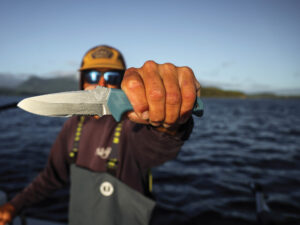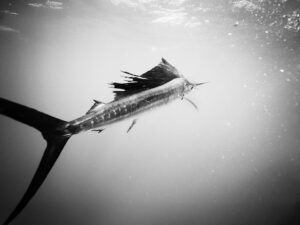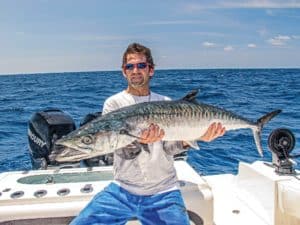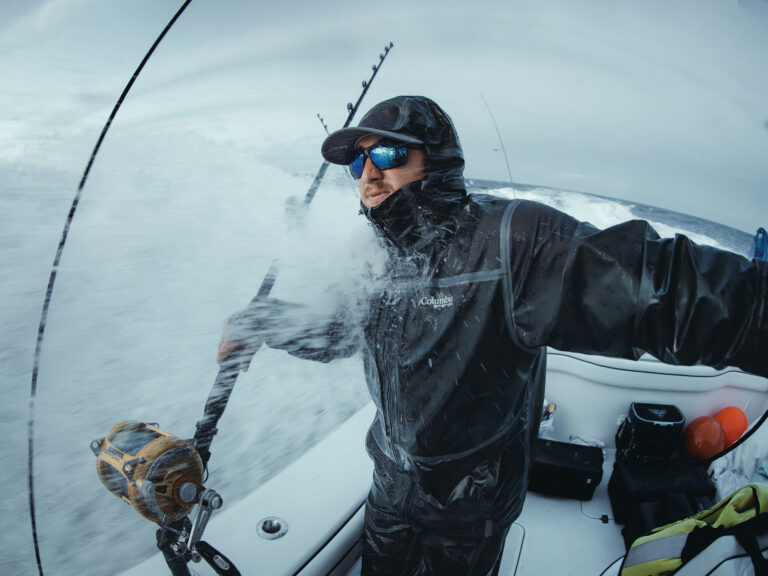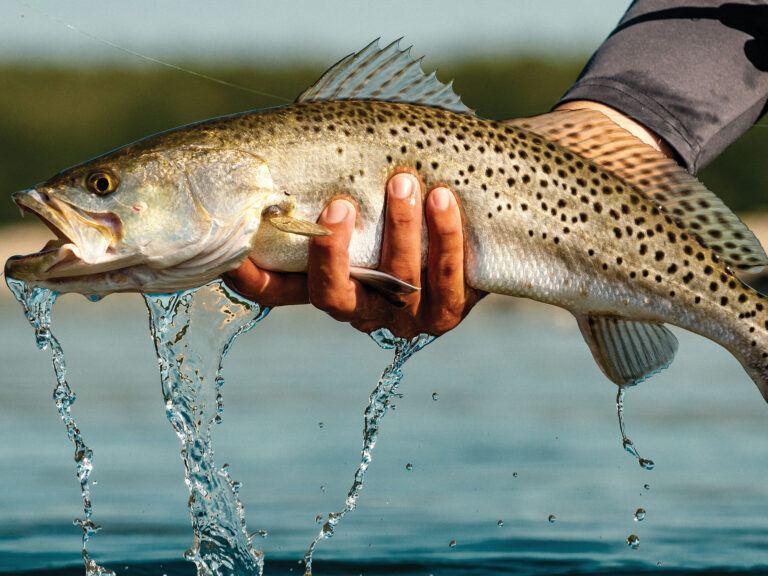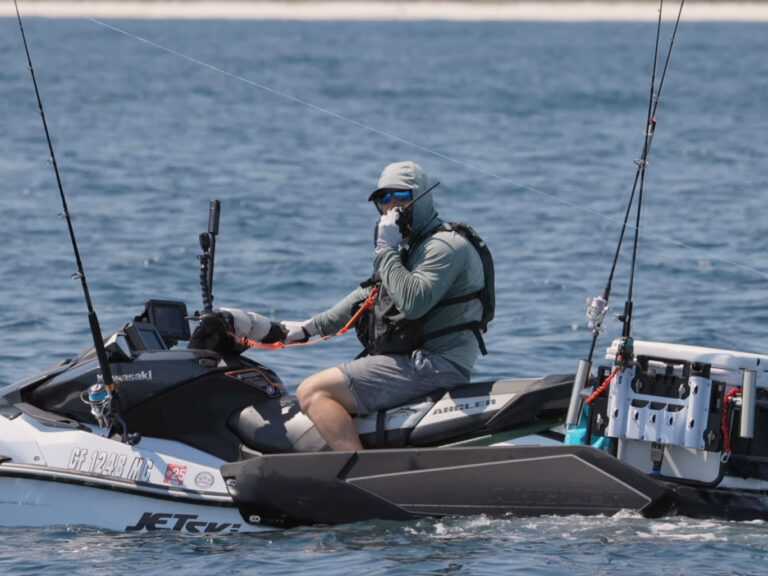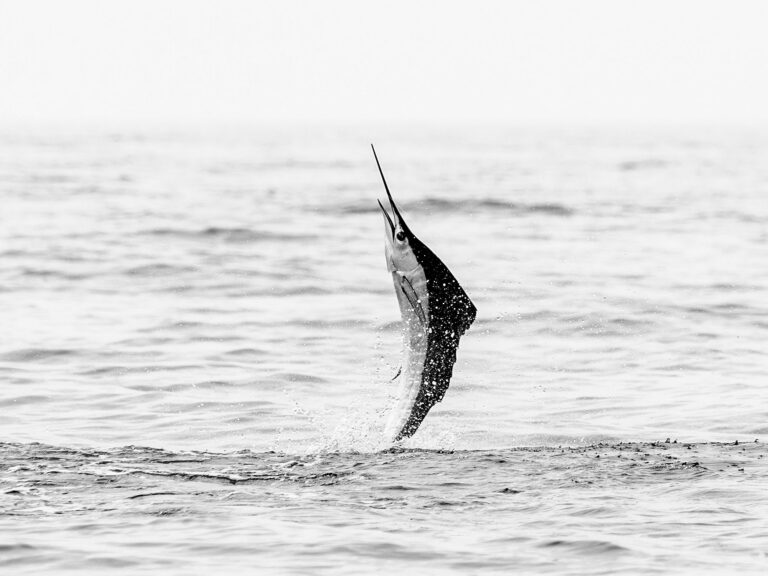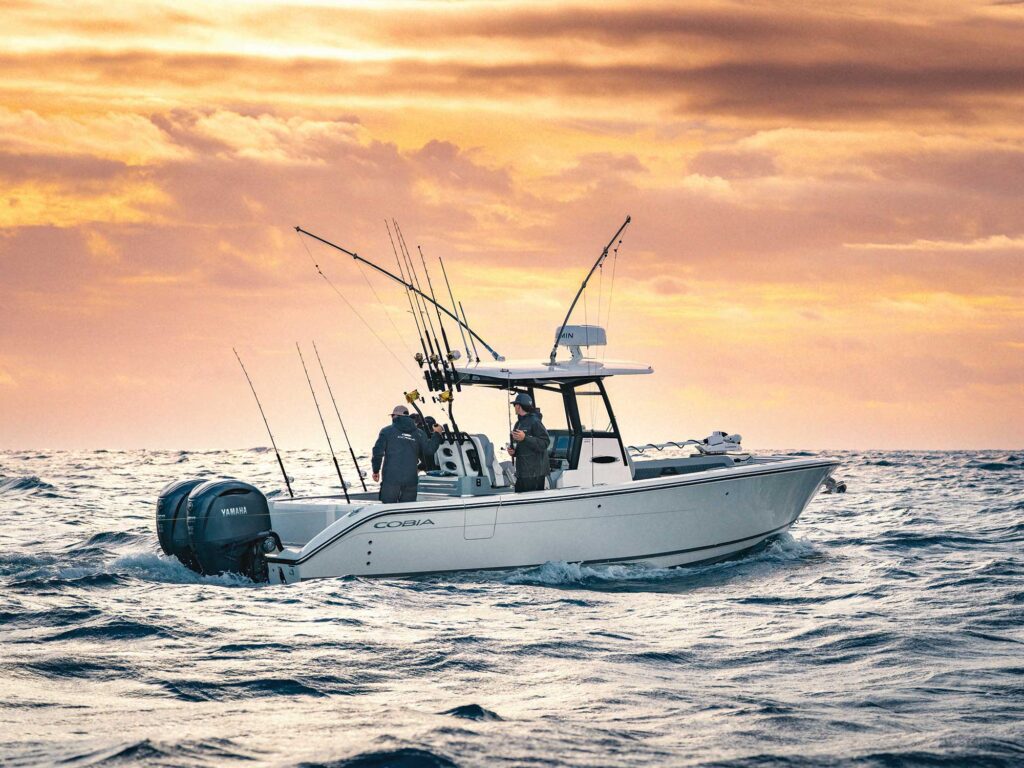
Let’s imagine for a moment that time travel is a reality. Using our Acme time machine, we transport a group of saltwater anglers from 1975 to a present-day boat show to ask for their reactions to advanced center-consoles of the 21st century.
What would they say?
“Why so much seating?” might be the first question. Indeed, center-consoles from 50 years ago neglected frills like seating—some even lacked helm chairs. Since then, the number of places to sit has grown dramatically.
Yet, our guest anglers point out that extra seating can interfere with the mission of a center-console—to provide ample deck space to pursue and battle fish.
Good point.
This brings us to the philosophy underlying Cobia’s new 285 Open, an offshore center-console model that takes a step back to the future. The 285 does not eliminate seating but offers ways to neatly tuck it away. This results in 101.5 square feet of aft cockpit space, as well as the ability to easily access the sides and bow. The 285 Open also lets you quickly fold out seating when needed. Our time travelers stand impressed.
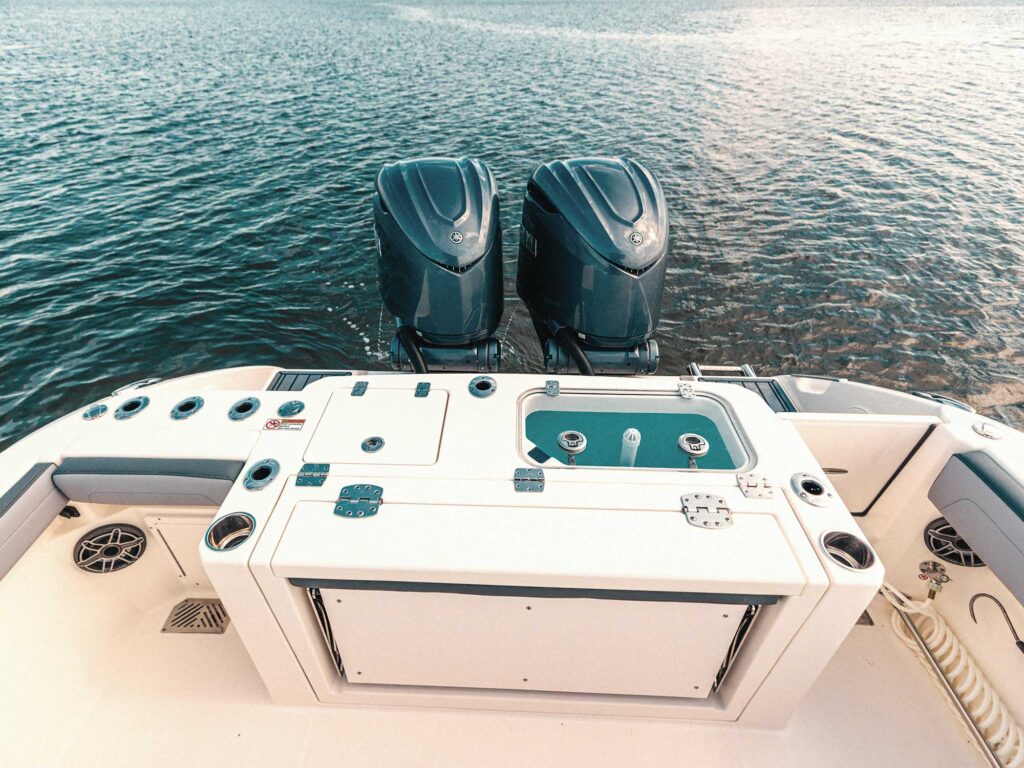
Seating aside, the 285 is built to fish with a 43.5-gallon transom livewell, topped off by a latching clear acrylic hatch. The time travelers love it.
A starboard tuna door lets you haul in big fish, board more easily or take a dip. Try finding that on an old center-console.
Seventeen rod holders dot the gunwales and transom. You’ll find six on the leaning post and five on the hardtop, not counting a pair of optional kingfish rod holders. That’s a far cry from the four to eight total gunwale rod holders found on old CCs.
The Cobia 285 Open is big enough to challenge offshore waters, yet compact enough to slip into tight marinas. Five decades ago, few CCs sported hardtops, so our guests are surprised to learn this is standard equipment. The aluminum pipework boasts a powder-coated finish with a subtle nonslip finish for a good grip. It integrates with the console and frames a full-height safety glass windshield (with an electrically operated vent at the top) and side windows.
In a Cobia trademark, the hardtop has two overhead boxes fore and aft of the helm position, as well as flush-mounted spreader lights, courtesy lights, stereo speakers, overhead handrails, base plates for outriggers and more.
Picture our time travelers ensconced in the twin deluxe, adjustable helm seats featuring flip-up armrests and fold-down bolsters, peering into the optional twin Garmin 16-inch multifunction displays, and their shocked expressions upon learning that each screen can monitor and access a multitude of onboard systems. Plus, the Garmins offer detailed electronic charts and GPS. (Might need to explain that to our guests later.) Add in an optional solid-state Garmin radar and advanced sonar systems, and let’s just say our guests have reached the saturation point.

Time for a boat ride.
We fire up the twin Yamaha 350 hp outboards. Our time-trotting anglers brace for a crackling start and an acrid cloud of blue smoke—traits of old two-strokes. Instead, the Yamaha four-strokes start with just a murmur and idle in near silence. We use the optional Helm Master EX joystick with full maneuverability to walk the 285 out into the channel, earning approving looks from our guests.
Outside the no-wake zone, minds are blown. We throttle up, and the 285 jumps to plane in 4 seconds and 30 mph in 8 seconds. Our guests hang on to the numerous handrails by the rigging/tackle station as speeds reach nearly 60 mph at full gallop.
We scale back to an optimum cruising lope of 27.7 mph, burning 14.8 gph at 3,000 rpm, achieving 1.87 mpg. The hull offers a balance between a sharp entry and stability with a skillfully designed deadrise combination. It cuts seas down to size and corners with ease and predictability.
For the ride back, we fold out the seats. The transom conceals a comfy bench that magically hinges downward while the top cover flips up to form a padded backrest. Going forward, we flip up the seat bottom on the front of the console.
Next, we add a filler across the walkway that normally extends to the bow, and snap upholstery pads onto the filler and the dry-storage modules on each side of the bow, then rotate the backrests that otherwise serve as coaming pads, and voila! There’s forward seating and lounging. Erect the pedestal table (which hides in deck-level recess), and you have a place to enjoy lunch. That table also can serve a midheight platform to transform the entire bow area to a big sun lounge. Our guests realize that seating on a CC is not such a bad idea after all.
In 1975, buckets served as the means of taking care of business, but the console interior—accessed by a front-opening door—offers a more civilized approach with a VacuFlush marine toilet and a sink with a pullout freshwater faucet that also serves as a shower wand. Our guests give us the thumbs-up.
Read Next: Cobia 265 CC Open

The Cobia boasts plenty of storage, including four cavernous fish lockers under the aft cockpit sole, an insulated transom cooler, a locker under the forward deck, and racks for rods, brushes and gaffs under the port gunwale. Try finding that kind of storage aboard a ’70s vintage CC.
No boat from that era featured Cobia’s VARIS fiberglass construction. The precision Vacuum-Assisted Resin-Infusion System results in a lightweight yet high-strength hull, liner and other components that will endure a lifetime or more of hard fishing.
Time for our guests to step back into the time machine and return to 1975. Of course, this never really occurred. But if it did, imagine how much sooner we’d have been able to enjoy fishing with the innovative layout and great features of the Cobia 285 Open.
Specifications
| Length: | 28’5″ |
| Beam: | 9’11” |
| Draft: | 1’7″ |
| Fuel: | 231 gal. |
| Weight: | 7,250 lb. (w/ engines) |
| Max HP: | 700 |
| Price: | Starting at $200,841 (w/ twin Yamaha F200 outboards) |
Cobia Boats – Fort Pierce, Florida; cobiaboats.com


